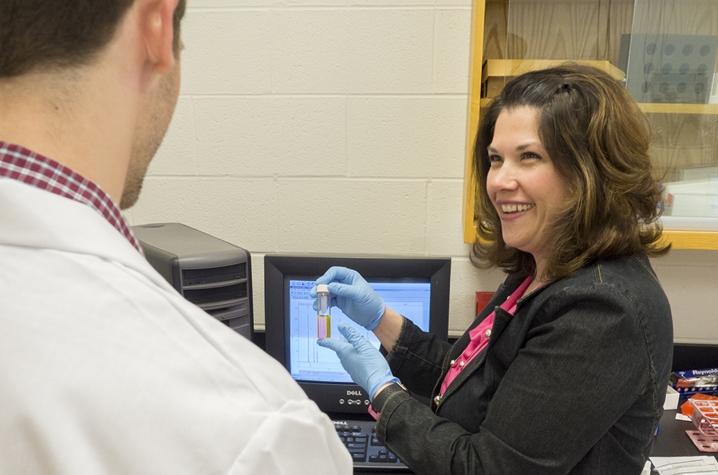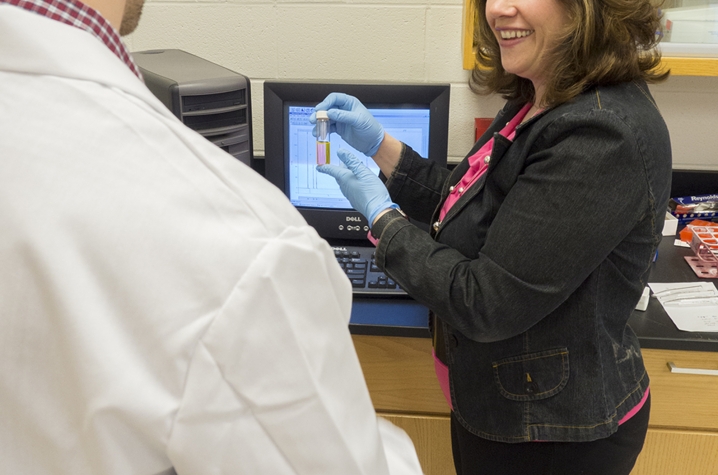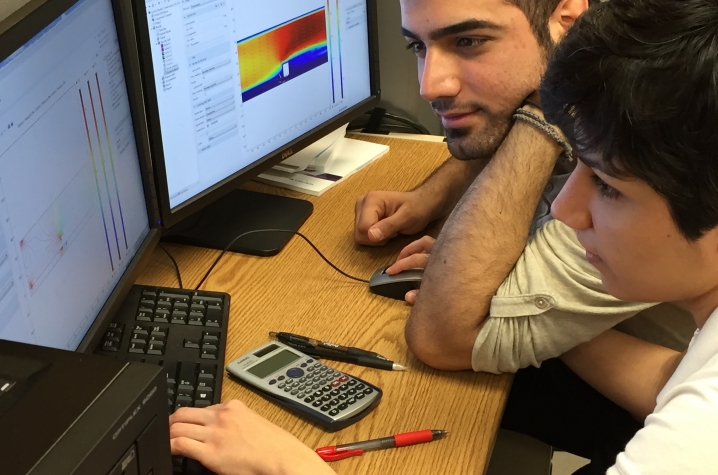Civil Engineering Professor’s Research Proves Timely for Concerned Community
LEXINGTON, Ky. (May 7, 2015) — Near the end of January, the community of Winston-Salem, North Carolina, was faced with a disturbing possibility: their children could be exposed to harmful chemicals while attending a local public school every day, based on the fact that a contaminated site lay beneath the school.
Following confusion and panic from parents and students, nationally recognized experts were called to engage with the school community. Kelly Pennell, University of Kentucky civil engineering professor, was one of three researchers who flew down in early February for a public information session.
Vapor intrusion — Pennell's area of expertise and the scientific term for the cause of concern in Winston-Salem — occurs when chemicals from contaminated groundwater or soil vaporize and enter into indoor air spaces.
In an interview with a Winston-Salem public radio station, Pennell said that vapor intrusion is an ongoing issue for the country because of legacy contamination sites where spills occurred years ago.
"It's a problem in many localities," she said. "There's not one state that isn't dealing with this issue."
Vapor intrusion is similar to radon intrusion, but differs in several ways; importantly, vapor intrusion results from the actions of a “responsible party” that caused the pollution rather than — like radon — through naturally occurring processes. With vapor intrusion, the party responsible is often liable to deliver a solution once science-based evidence confirms a problem exists.
"Many times, people look at their floor and say, 'Well I don't have any cracks in my floor,' but yet we see that low concentrations of these compounds can enter the indoor air through many different pathways — even in the absence of visible cracks," Pennell said.
And when individuals breathe 20,000 liters of air a day, compared to drinking only two liters of water a day, even low concentrations in indoor air are significant.
"We're just, in the past 10 years I'd say, really trying to systematically evaluate potential health risks from vapor intrusion," said Pennell, who earlier this year received the prestigious National Science Foundation CAREER Award for her project “Vapor Intrusion, Knowledge Brokers, and Environmental Health — A Three Dimensional Perspective.”
Vapor intrusion, depending on the chemicals and duration of exposure, can have the potential to cause cancer, and has more recently been linked to acute health risks such as birth defects.
One research question Pennell and the UK Superfund Research Center are currently looking at is how the health (nutrition, physical activity) of the individual can modulate the effect of that exposure, while also investigating new methods for reducing exposures to pollutants. She and her team of undergraduate and graduate students are also looking at how atmospheric effects, like wind and precipitation, can influence the vapor intrusion process. For example, how wind flows around a building can alter the air exchange rates inside of a building.
Pennell, who joined UK faculty in 2013, has been involved in many vapor intrusion research projects, including computational modeling with collaborators at Brown University, a field study with collaborators at Brown and Boston University in the metro-Boston area, and now lab, modeling and community-engaged studies at UK.
Using this multi-pronged approach, she continues to gain a stronger scientific understanding of what factors affect vapor intrusion and when it can and cannot occur.
For example, the field study in Boston with Brown University and Boston University delivered an unexpected finding; Pennell calls it "CSI of the toilet." The team was finding indoor air concentrations of a chemical and narrowed it down to the upper level of the building; an odd finding because vapor intrusion should come from the ground floor.
It turns out, there was a small sewer gas leak in the upstairs bathroom, a fairly common occurrence. But this sewer gas contained high levels of the chemical and the leak was identified as a potentially significant exposure route that was originally overlooked.
"The toilet was removed and the students sampled the sewer pipes to evaluate the vapor concentrations. The students were quick to tell me, 'hey, we never signed up to do plumbing research,'" Pennell joked.
Although it may not have been what they expected, the team's work would soon prove valuable.
Word spread about the finding and the California Environmental Protection Agency invited her team to talk to the agency about it. In March, new collaborators developing methods for evaluating the sewer gas pathway presented how sewer gas can be a source of these chemicals in indoor air at the Association for Environmental Health and Sciences Annual Meeting.
Pennell says the finding is especially of interest to regulators, and "from a health stance, this (sewer gas) is an important exposure pathway."
Not only an issue in the realm of health and the environment, vapor intrusion often becomes a legal dispute between those who may be liable and those affected. In this way, Pennell draws from her past experience as an environmental consultant and government liaison, positioning her work at the center of research, policy and practice.
"As part of the UK Superfund Research Program, we do monthly seminars in Frankfort at the state offices. We ask them what types of topics they want to learn about, and we organize seminars based on their interests. I've given several talks on vapor intrusion and environmental health," Pennell said. She and her team also bring in national experts to speak on other topics of interest to state agency staff.
As a researcher, she says it is important to think what in her research is of value to the public, and at the same time she realizes the nature of her work often includes uncertainty and is not immediately transferable to real-world problems.
As the school district in Winston-Salem was faced with a decision and also a lot of uncertainty, Pennell says when considering environmental exposures they must use what they know as true or what is likely, then individuals can make better decisions instead of only reacting to emotions.
Several months after Pennell visited Winston-Salem, the school in question is now vacated, but members of the community still contact Pennell about test results and for support.
"Back in January, when a parent from Winston-Salem called me on my cell phone asking questions about my research and how it related to the health of her child, I was humbled and caught somewhat off guard, but mostly, I was motivated," Pennell said. "It was truly a privilege to have been welcomed into her community as they struggled with a difficult, but all too common problem.”
MEDIA CONTACT: Whitney Harder, 859-323-2396, whitney.harder@uky.edu







